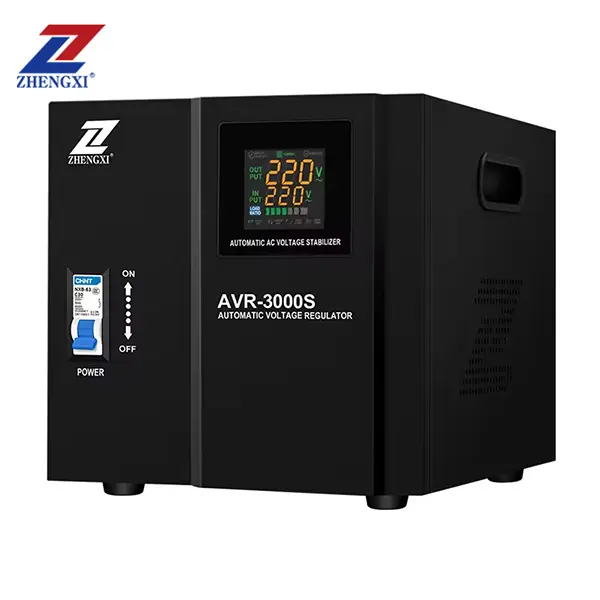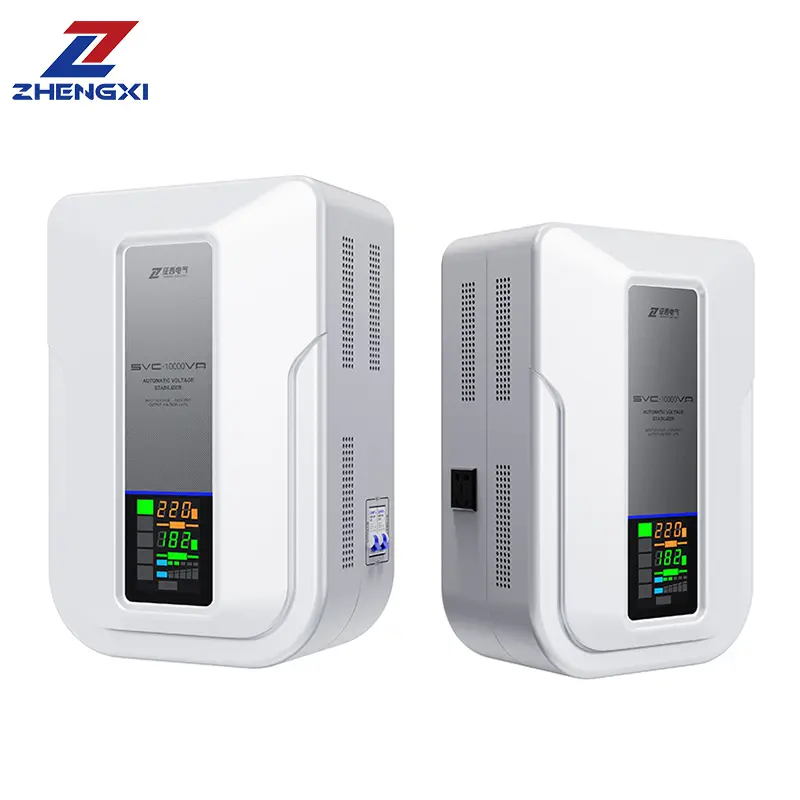Ensuring a steady AC power supply is crucial for protecting sensitive equipment from voltage fluctuations. But how do AC voltage stabilizers work exactly? In this deep‑dive, we’ll explore their core components, operating mechanisms, and the technologies behind AC voltage stabilizer working principles. Whether you’re comparing AC voltage stabilizer price, vetting a reliable AC voltage stabilizer manufacturer, or simply curious, this guide delivers clear, actionable insights.
1. Why Voltage Stabilization Matters
Power grids often experience under‑voltage (brown‑outs) and over‑voltage (spikes) due to grid load, weather events, or faulty transformers. These fluctuations can:
- Damage electronics: Compressors in air conditioners, microprocessors in computers, and LEDs in lighting systems are vulnerable.
- Trigger downtime: Unexpected shutdowns lead to productivity losses.
- Void warranties: Many equipment warranties require operating within specified voltage ranges.
An AC voltage stabilizer actively corrects input swings, maintaining a safe, constant output—typically within ±5 V of nominal (e.g., 220 V ± 5 V).
2. Key Components of an AC Voltage Stabilizer
Most stabilizers share these core elements:
- Voltage Sensing Unit: Continuously measures incoming voltage.
- Control Circuit (Logic): Processes the sensed data and decides when correction is needed.
- Transformer or Power Electronic Module: Executes correction—either via moving taps (servo) or semiconductor switching (static).
- Display & Alerts: Digital meters or LEDs show input/output voltages and fault conditions.
Together, these elements form the backbone of the AC voltage stabilizer working principle.
3. Step‑By‑Step Working Mechanism
- Voltage Detection: The sensing unit samples the incoming AC waveform hundreds of times per second.
- Error Calculation: The control circuit compares actual voltage against a preset reference (e.g., 220 V).
- Correction Trigger: If input drifts beyond thresholds (e.g., below 200 V or above 240 V), the controller activates the correction stage.
- Voltage Adjustment:
- Servo‑Type: A small motor shifts the transformer’s secondary winding taps up or down, adjusting output in fine increments.
- Static‑Type: Semiconductor switches (e.g., IGBTs) rapidly insert or bypass inductors/capacitors to boost or buck voltage.
- Output Delivery: The stabilized voltage feeds the connected load, ensuring uninterrupted, safe operation.
This cycle repeats multiple times per second, providing seamless regulation even under rapid mains fluctuations.
4. Types of Stabilizer Technologies
- Relay‑Type Stabilizers: Employ mechanical relays to switch discrete transformer taps. Cost‑effective for mild fluctuations but slower response (~50–100 ms).
- Servo Stabilizers: Use a motorized tap‐changer for continuous regulation with high precision (±1–2%) and moderate response time (10–30 ms).
- Static (Solid‑State) Stabilizers: Leverage high‑speed semiconductor switching for ultra‑fast response (<10 ms) and maintenance‑free operation—ideal for sensitive electronics.
- Digital/Hybrid Models: Combine servo and static elements under microprocessor control for balanced speed and accuracy.
Each technology offers trade‑offs between cost, response time, efficiency, and maintenance needs—key factors when comparing AC voltage stabilizer price and performance.
5. Real‑World Applications
- Home Appliances: Protect refrigerators, air conditioners, and home theaters in regions with unstable grids.
- Commercial Offices: Safeguard servers, network switches, and medical equipment from harmful surges.
- Industrial Plants: Ensure smooth operation of motors, CNC machines, and welding units.
- Telecom & Data Centers: Maintain uptime and data integrity by delivering clean, consistent power.
Choosing the Right Model
When selecting an AC voltage stabilizer, consider:
| Criterion | Recommendation |
|---|---|
| Capacity (kVA) | ≥ total load VA + 20% buffer |
| Response Time | <10 ms for sensitive electronics |
| Input Voltage Range | Wide‑range (e.g., 140–260 V) for unstable grids |
| Efficiency | ≥ 95% to minimize energy loss |
| Protection Features | Overload, surge arrestor, short‑circuit |
| Certifications | CE, RoHS, ISO9001 for quality assurance |
Partnering with a reputable AC voltage stabilizer manufacturer ensures you get robust support, OEM options, and competitive pricing.
FAQ
Q1. What is the main difference between servo and static stabilizers?
Servo stabilizers adjust voltage via a motor‑driven tap‑changer for precise output, whereas static stabilizers use semiconductor switches for much faster response and less maintenance.
Q2. How fast does a stabilizer react to voltage changes?
Static stabilizers respond in under 10 ms, servo types in 10–30 ms, and relay types in 50–100 ms, making static models best for delicate electronics.
Q3. Can a stabilizer protect against lightning strikes?
While stabilizers include basic surge arrestors, dedicated lightning protectors or whole‑building surge suppression systems are recommended for direct strike protection.
Q4. Do stabilizers consume a lot of power?
Modern stabilizers achieve high efficiency (95–98%), so standby power losses are minimal, typically under 2–3% of rated capacity.
Q5. How often should I service my AC voltage stabilizer?
Annual maintenance—cleaning, terminal tightening, and functional testing—is sufficient for most models. Static types require less upkeep than servo or relay variants.
Understanding how AC voltage stabilizers work empowers you to choose the right solution for stable, reliable power—whether for home, office, or industrial applications. By matching technology, capacity, and response time to your needs, you’ll safeguard equipment, reduce downtime, and maximize ROI.








